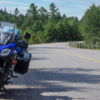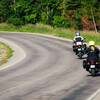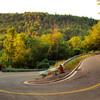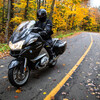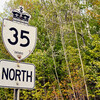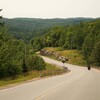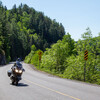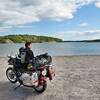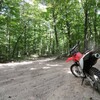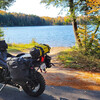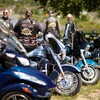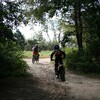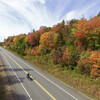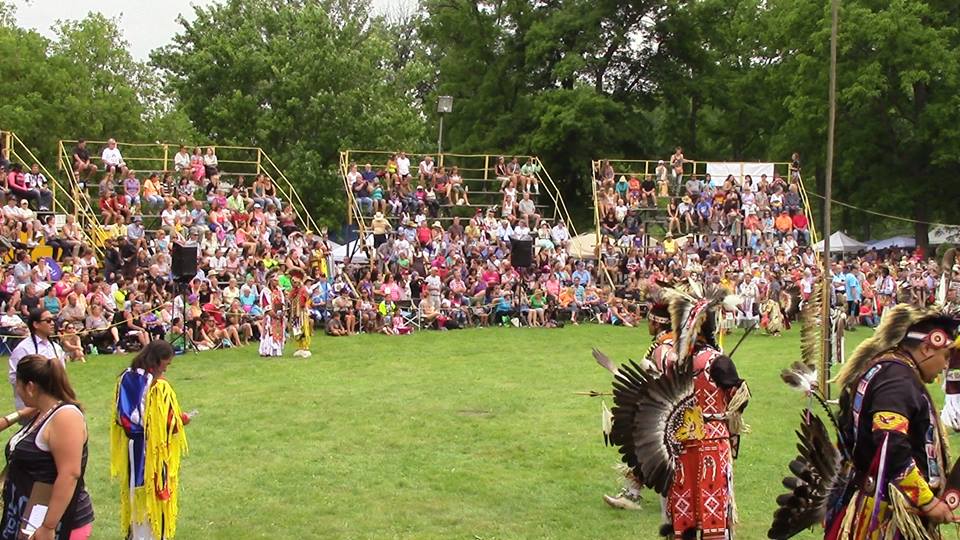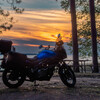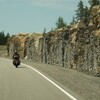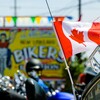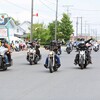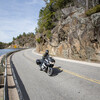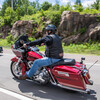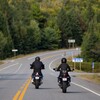
Cruise to Six Nations
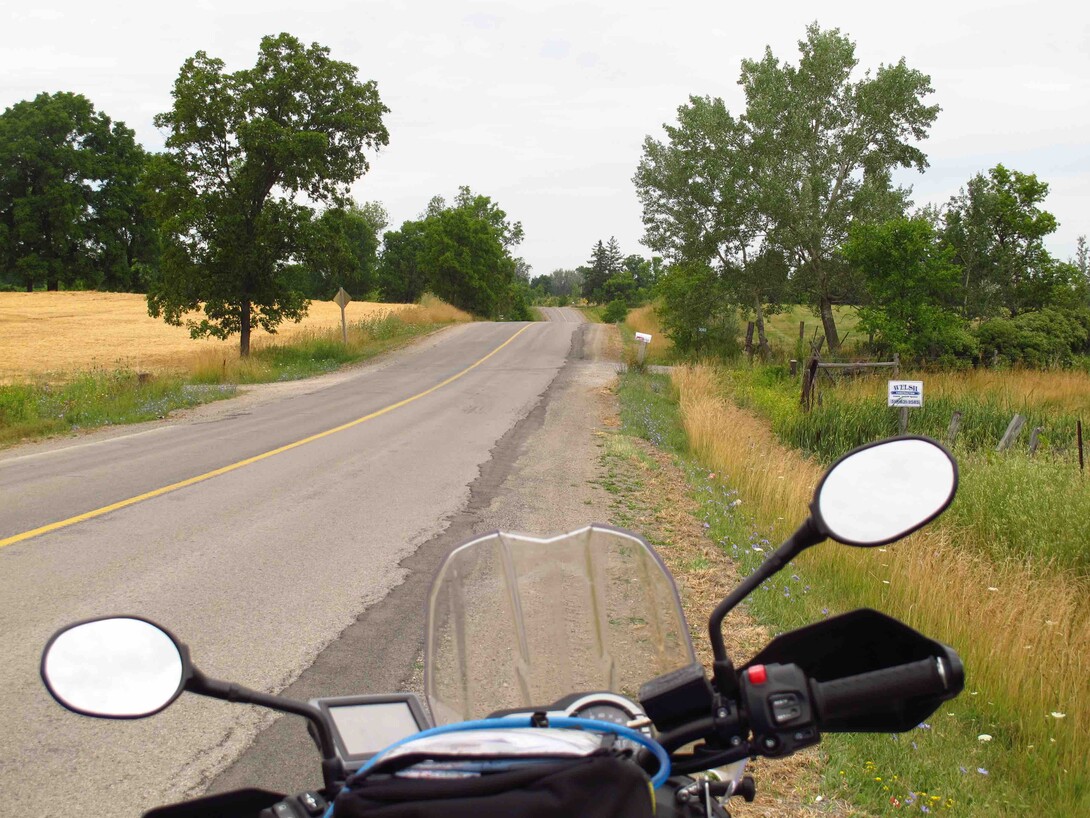
One of the ways to begin to know another culture is to attend its festivals. And so it was that I joined a group of rider friends at the 37th annual Six Nations of the Grand River Champion of Champions Pow Wow. Held at Chiefswood Park, the site is the former estate of E. Pauline Johnson, accomplished poet, performer and critical thinker of Mohawk and British ancestry.
A contemporary Pow Wow is an aboriginal multicultural event for renewing old friendships, making new ones, and sharing information. It’s a time to preserve a rich heritage and bring the old ways alive in modern times. People from hundreds of First Nations across Canada and the United States come together to sing, dance, and vie for awards. Everyone is welcome to attend and participate, no matter what your ancestral background. Or what you ride.
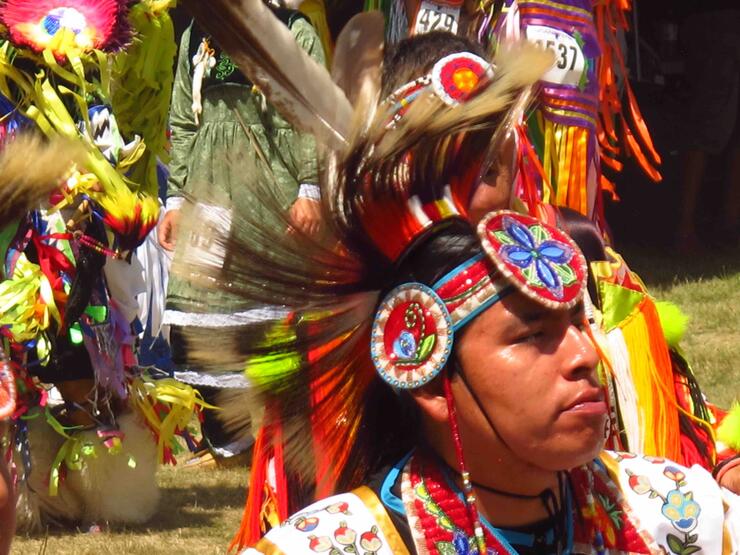
Champion of Champions
The welcome, celebratory, and fun atmosphere was evident even as we sat in a long line up of traffic waiting to park. Last year 10,000 people attended, and organizers were expecting more this time. Once on the grounds, we were directed to preferred motorcycle parking near the entrance gate, under a shade tree.
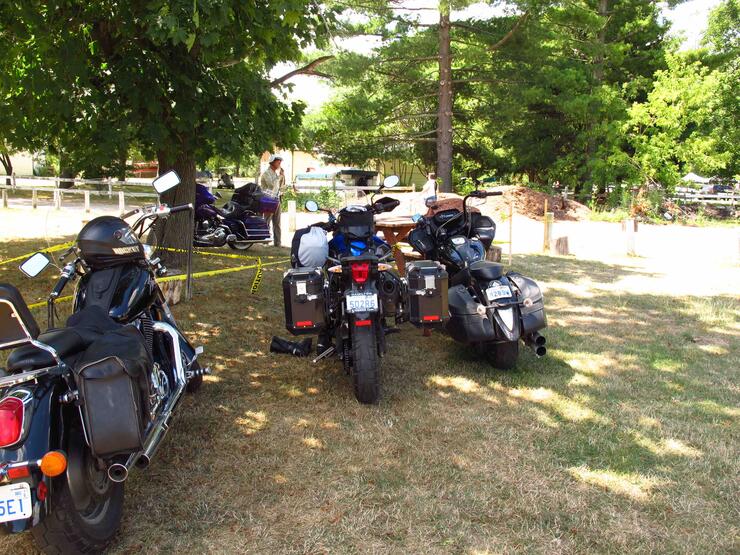
A Grand Parade kicked off the festivities. Accompanied by singers and drummers, a dancer in full regalia led in proud veterans who’d served with Canadian and U.S. forces in deployments including Korea, Viet Nam, and Afghanistan.
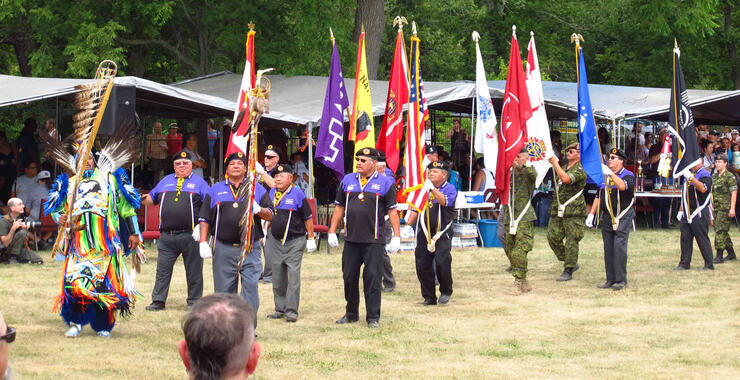
A song honouring the elders and newborns for their role as teachers was next, followed by a victory song expressing gratitude, and lastly, a poignant song acknowledging the mothers and grandmothers of all nations whose children are prisoners of war or missing in action.
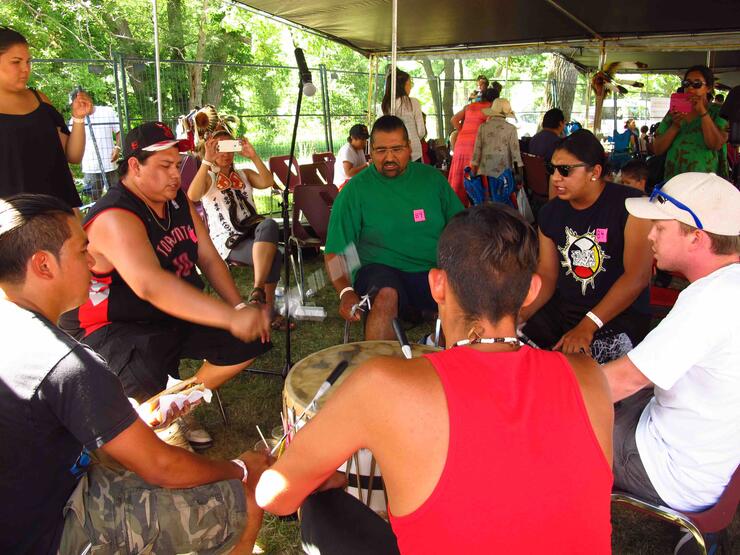
All the while, dancers wearing colourful costumes with intricate beadwork, jingle cones, elaborate feathered headdresses, war bonnets, eagle bustles, and animal pelt streamers danced to the drumbeat around the parade ground and the veterans.
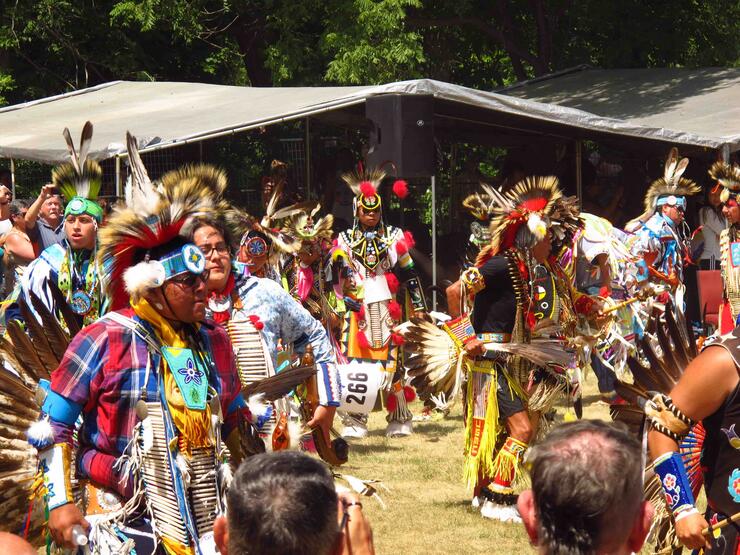
The entrance ceremony finished by welcoming everyone home and inviting us to join the dance. Then in blazing 36 ºC heat, the contests began, with categories for young to golden age in traditional, fancy, and hoop dancing. Jumping in the Grand River’s flowing languidly only metres away was tempting, but it was cordoned off for the event.
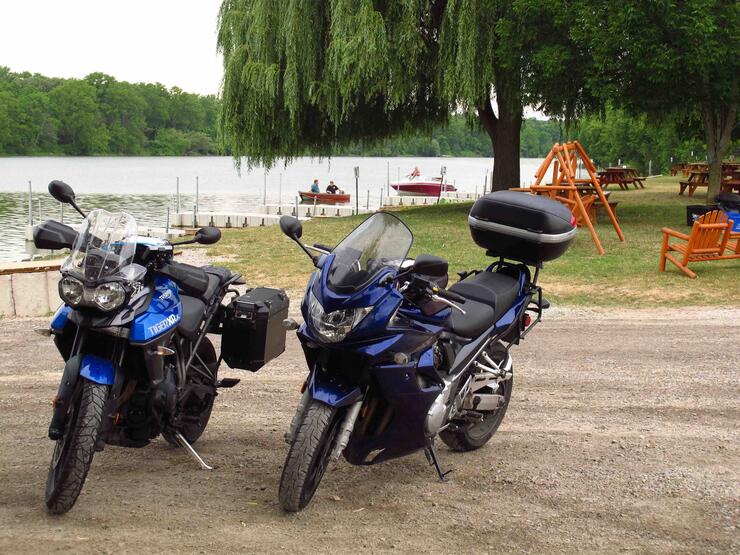
The Pow Wow is but an introduction to a culture. Getting to understand the people, their history and ways makes a great theme for a ride. For the people of the Six Nations, their most recent history is centred on the Grand River.
River of Time
The Grand flows 280 km from its source near Dundalk, meandering and creating a fertile valley as it broadens and finally empties into Lake Erie. Aboriginal peoples have lived here for 10,000 years, joined relatively recently in the 18th and 19th centuries by waves of immigrants who settled along its banks, establishing farms, industries, and towns. A ride anywhere along its banks reveals historic sites, artifacts, unique bridges, dams, mills, and historic homes that grew out of this era.

The day after the Pow Wow, we set out on a scenic ride through sections of countryside where the road runs along the river. But it was the people of the Six Nations—Mohawk, Seneca, Tuscarora, Oneida, Onondaga, and Cayuga—who were on my mind as we followed the river downstream.
The Haldimand Treaty of 1784 promised a tract of land six miles deep on either side of the Grand River to be laid out for the Six Nations, to enjoy forever. The deal of approximately 950,000 acres, in prime beaver hunting grounds, was in appreciation of their allegiance to the King during the American Revolution and the subsequent loss of their ancestral homeland. Today Six Nations territory is located on 4.9% of the land that was originally granted.
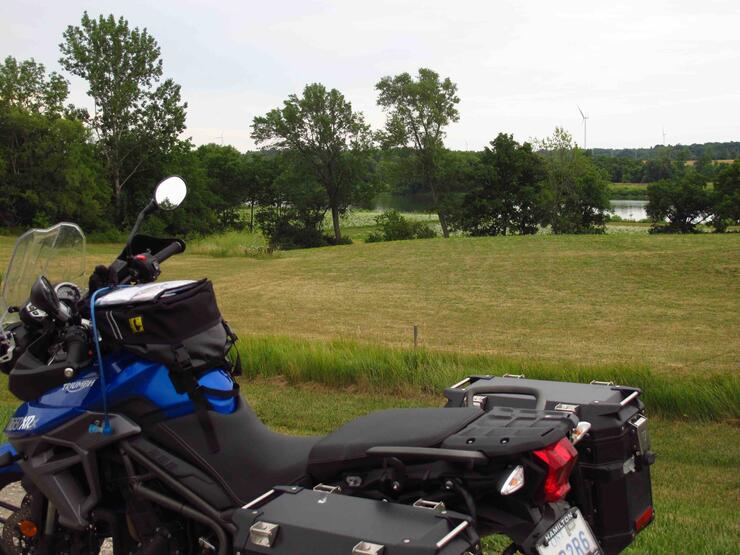
The main reserve is approximately 25 km southwest of Hamilton between Brantford, Caledonia, and Hagersville. The Six Nations Tourism office in Oshewegan, right across from Chiefswood Park is a great place to get started. In addition to housing a wealth of information, they have interpretive displays depicting their heritage. Have a look at the Six Nations of the Grand River tourism site to learn more.
Local guides can take you on a tour through Oshewegan and the community. Dancers will teach you the traditions behind their dances and regalia. Artisans can show you how to make traditional and contemporary crafts. You can even try beadwork! Arrangements for tours and classes can be made at the tourism office, starting at $5 per person.
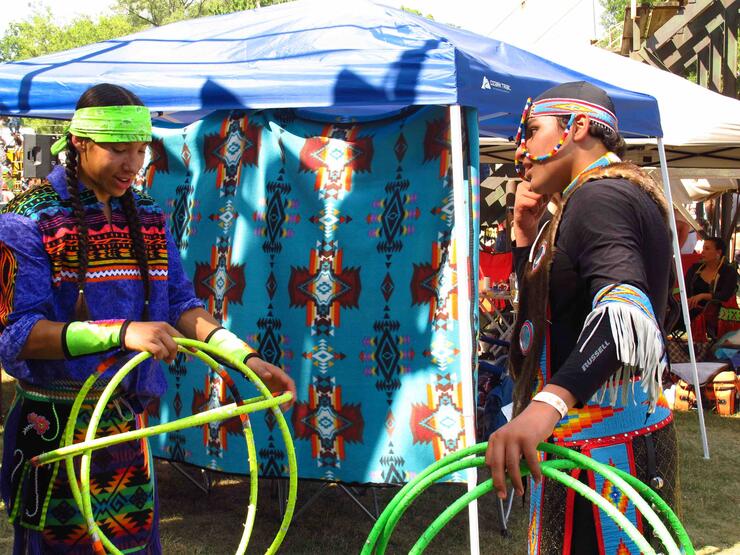
Six Nations Polytechnic is a unique post-secondary Indigenous Knowledge Centre based on community based learning. By combining Indigenous and Western knowledge, students are taught how to use traditional wisdom to be successful in modern times. It’s open for tours if you book ahead.
There’s always lots going on at Six Nations. Originating in 1867, the annual Agricultural Fair is the oldest First Nations fair in Canada. The Handicrafters Bazaar happens in November and showcases artisans at three different locations. Events happen throughout the year and it’s best to check the calendar for events for dates and times.
Remembering the History
Two other historic sites are located on the banks of the Grand in the city of Brantford, a short ride away. At the Woodland Cultural Center, it’s sobering to reflect on the Mohawk Institute which functioned as a residential school from 1831 to 1970. When it closed, it became a centre for the renaissance of First Nations culture, now housing an extensive library accessible to the public. It also contains private offices. Next door, on the same property, is a museum and gallery of showcasing artifacts, indigenous art, and illustrating cultural revitalization.
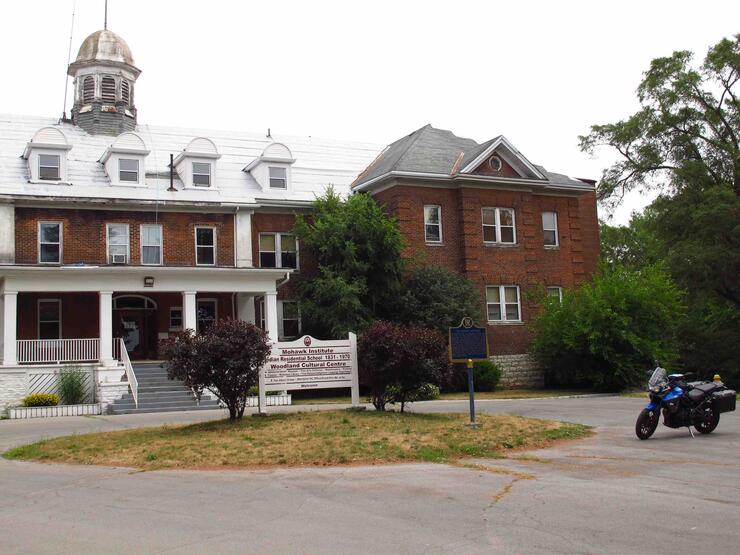
Just down Mohawk Road on the same tract of land, Her Majesty’s Royal Chapel of the Mohawks is one of two royal chapels (the other is in Tyendinaga) and the oldest standing church in Ontario. It sits under old pines, surrounded by graves of indigenous and non-indigenous people, including the tomb of Captain Joseph Brant who led and aligned the Mohawks with the British.
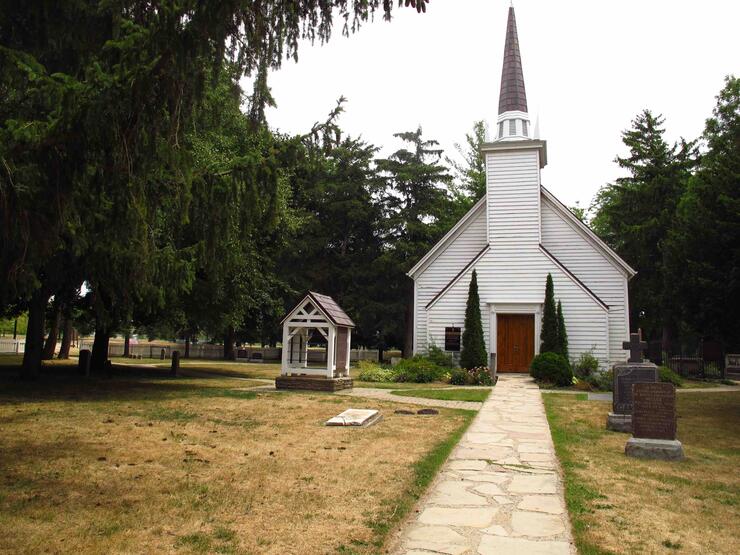
The door appeared closed, but I tested and sure enough, it swung open, the air-conditioned interior a welcome respite on a sweltering day. An interpretive guide who provided insights into the history of the chapel, First Nations culture, and contemporary issues greeted me. I wondered whose feet had walked the original pine floorboards, or who’d sat in the pews. Eight gorgeous stained glass windows interrupt the pine panelling to tell the story of the relationship of the Haudenosaunee (Iroquois) Confederacy, to which the Six Nations belong, and the British Crown.
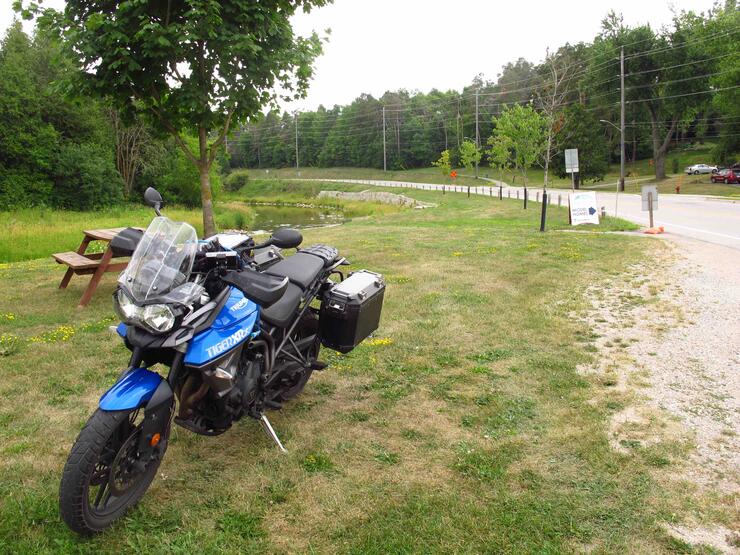
The Grand River is the longest river located entirely in the southern part of the province. It offers many miles of riding along its picturesque course. Imagine if it could talk and tell us about the people who have lived here for thousands of years. The people of Six Nations people were not the original First Nations who walked this land, but with a more than 300-year history, they’re the most recent.
Take a ride down the Grand, stop by, and ask questions. You’ll receive a warm welcome no matter when you ride in.
Recommended Articles

Bucket List Motorcycling in Ontario, Canada 2025
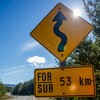
Ontario's Best Twisties: Five Roads to Get Your Lean On
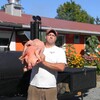
The Big Belly Tour—A Complete List of Ontario's BBQ Joints

It's Bike Night in Ontario 2024

Ontario's Top Twisties
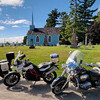
Have You Ridden Canada's OG Highway? Here's Why Every Rider Needs to Hit Up Historic Highway 2

23 Amazing Photos That Prove PD13 Is Still The Best Motorcycle Event Ever
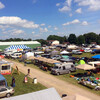
Motorcycle Swap Meets in Ontario—The Complete List for 2025

And a Vespa shall lead them all...
